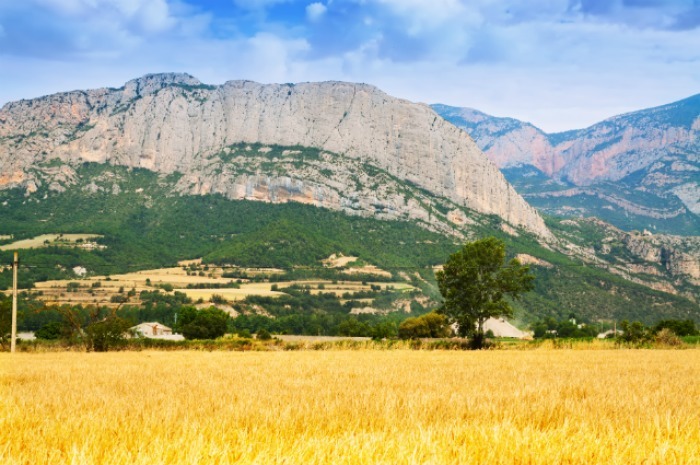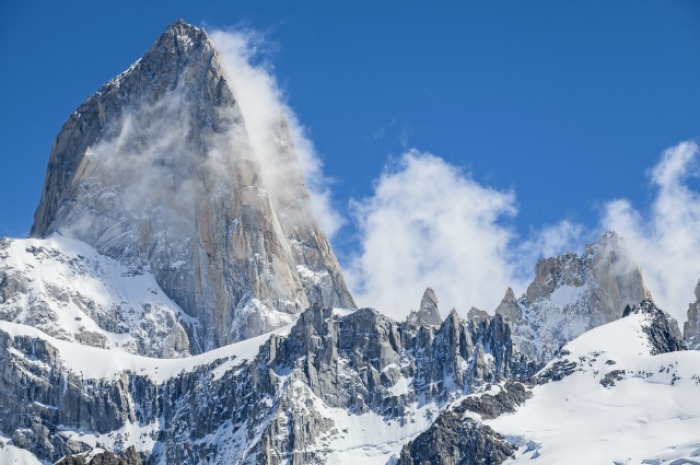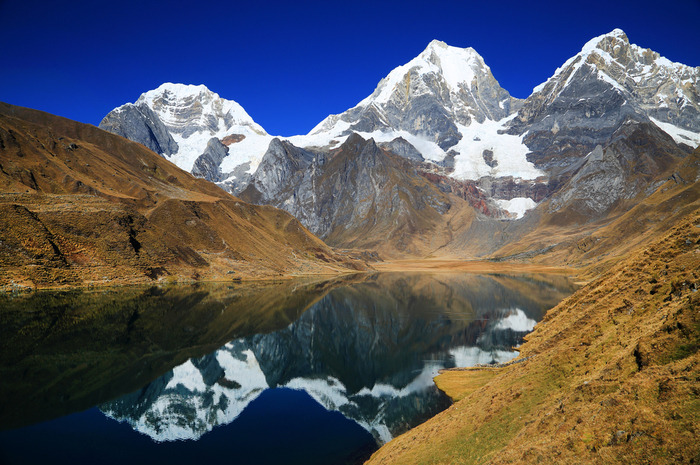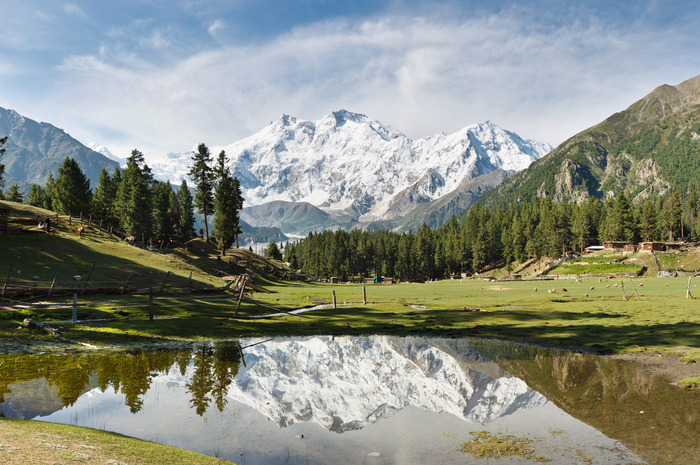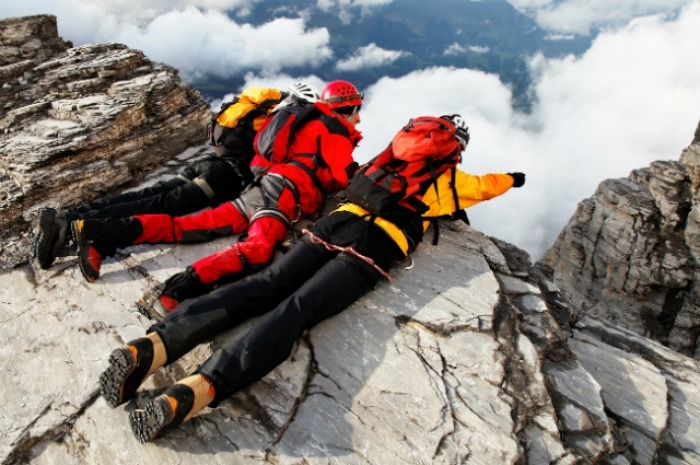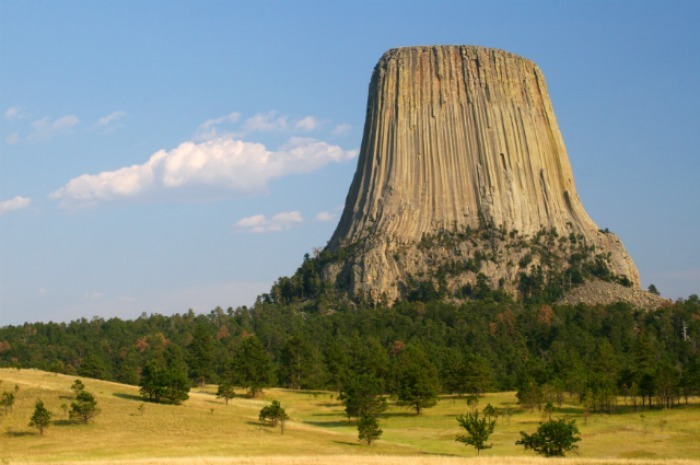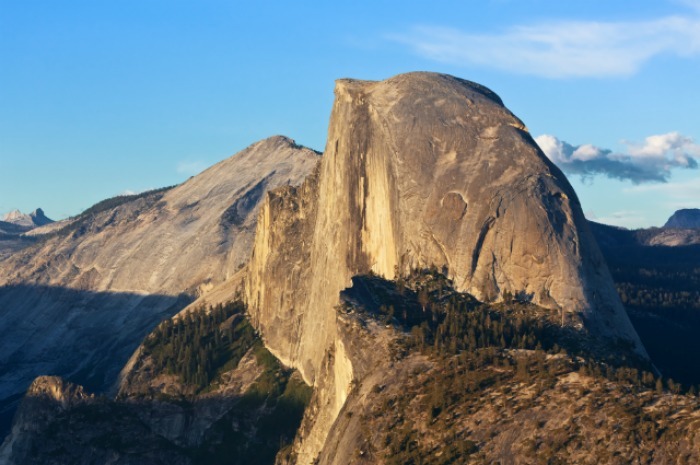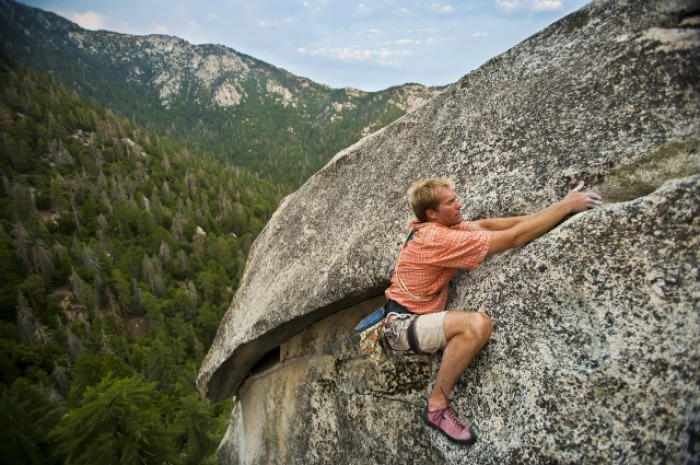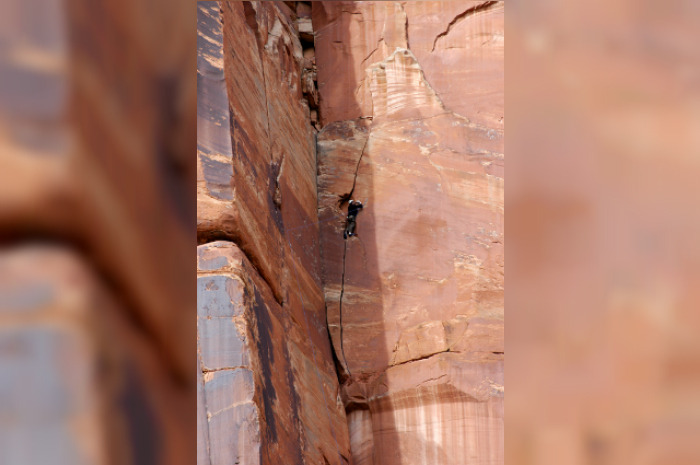The 15 Most Dangerous Rock Climbs
Rock and Ice Magazine calls this route at Oliana, "the hardest of the hard," and REEL ROCK, an online platform for climbing films, had no problem definitively naming it "the hardest rock climb in the world." In 2013 Adam Ondra was the first person to ever successfully ascent this climb after nine weeks of careful and laborious planning.
2. Fitz Roy, Patagonia
At about 11,020 feet tall, Mount Fitz Roy is considered to be of "average height," yet it easily ranks as one of the world's most arduous climbs as mountaineers are presented with long sections of technical climbing thanks to its entirely vertical granite peak.
3. The Matterhorn, between Switzerland and Italy
The giant horn-looking mountain has the highest fatality rate in the Alps – 450 climbers have died until 2013. Fewer people are climbing it because of the mountains lethal reputation. The problems come from the unpredictable avalanches and rock falls. The routes are also very steep.
4. El Capitan, California
The largest monolith of granite in the world, El Capitan has several designated climbing routes, the majority of which are considered highly challenging. In fact, according to Big Wall Climbing by Doug Scott, until the late 1950s people believed that El Capitan was impossible to climb. After several failed attempts and a few setbacks, two free climbers recently conquered the formation's Dawn Wall, which is widely considered one of the toughest ascents in the entire world.
5. Siula Grande, Peru
According to Simon Yates, who along with Joe Simpson was one of the first mountaineers to ever climb the Siula Grande in 1985, he and Simpson were originally drawn to the Huayhuash Mountains for their "ease of access." "It seemed like a logical stepping stone between the European Alps and the Himalayan giants," Yates wrote in The Telegraph. "It turned out to be a brutal introduction to high-altitude exploratory mountaineering." Siula Grande's western face is essentially a sheer vertical ascent, and after Simpson chronicled his and Yate's remarkably harrowing journey in "Touching the Void," the mountain is now regarded as one of the world's most dangerous climbs.
6. Nanga Parbat, Pakistan
The mountain rises 26,658 feet. Altitude sickness alone is a huge risk factor, in addition to strong winds, snow, rock falls and avalanches. Albert Mummery, a famous English mountaineer, described the wall: "The astounding difficulties of the southern face may be realized by the fact that the gigantic rock-ridges, the dangers of the hanging glacier and the steep ice of the north-west face-one of the most terrifying faces of a mountain I have ever seen-are preferable to the south face."
7. The Eiger, Switzerland
According to the BBC, the Eiger's north wall has claimed the lives of more than 50 climbers since attempts to reach its summit were first made in 1935. At 13,029 feet tall, it's part of the Bernese Alps and is so notorious that it has been nicknamed "wall of death." In 2010 the BBC aired "Eiger: Wall of Death," a documentary chronicling the "history of one of the world's most challenging mountains... and its infamous north face."
8. Mont Blanc, French-Italian border
Mont Blanc is commonly known as the Death Mountain or the White Killer, according to Summit Post. It kills so many people every year that it is difficult to find a site online that determine an exact number. Estimates point at a total of about 8,000 people. The mountain is extremely popular – more than 20,000 people visit it a year. According to The Atlantic, the problem comes from the fact the climb is advertised as a "long walk" that anyone in fairly good shape can master. The result is unexperienced and unqualified climbers attempting to conquer it. It gets too crowded. "The crowded slopes also mean competition for footing in narrow places, as teams attempt to pass each other, and long waits at some points for access to passageways — which means that climbers are exposed to high-altitude health risks, as well as cold and bad weather, for longer periods of time."
9. Devil’s Tower, Wyoming
Declared a United States National Monument in 1906, Devil's Tower is widely considered one of the most popular climbing spots in the U.S. The formation has many routes to choose from, all varying in levels of difficulty, but Frank Sanders, a climbing guide in the area says that even experienced climbers should approach with care. "Don't be put off or get misled by the numbers. 5.6 here is not a gimme. Start a grade easier than what you would normally feel comfortable climbing," he told Climbing Magazine.
10. Annapurna, Nepal
Just about 150 people have even tried to climb the world's 10th highest mountain; about a third of them have died. This is the highest fatality rate. "Annapurna is [a] life-taking mountain," Mingma Sherpa wrote on his expedition page. "Climbing Annapurna depends on luck and hard work," quoted by Rock and Ice Magazine. The huge ice cliffs and seracs are very challenging.
11. Half Dome, California
According to Climbing in North America by Chris Jones, Josiah Whitney of the California Geological Survey described Yosemite's Half Dome as "perfectly inaccessible" in the 1870s. Of course, plenty of climbers have since proven him wrong. Dare devils who aim to ascend the 8,839-foot granite dome now have several different options for making their way to the top. The final 400 feet are, for the most part, entirely vertical, which is why this climb is considered risky. According to the National Parks Traveler, as many as five people have died after falling off the Half Dome's cable-assisted route that leads to the peak.
12. El Sendero Luminoso, Mexico
According to Rock and Ice Magazine, this entirely vertical 1,750-foot tall climb "requires thin, technical face-climbing above hundreds of feet of exposure." In other words, it's extremely arduous. Yet, in an astonishing feat, last year Alex Honnold free-soloed El Sendero Luminoso's "big-wall" route in just three hours, which according to Outside Online typically takes climbers at least two days to conquer.
13. K2, Pakistan and China
K2 is the second highest mountain in the world, so, of course, climbing it won't be easy. The climb is challenging because the sections of rock face are very steep and intertwines with ice pillars. They can collapse at any moment. Severe storms are common even in the summertime. "It's enormous, very high, incredibly steep and much further north than Everest which means it attracts notoriously bad weather," says Britain's most celebrated mountaineer Sir Chris Bonnington, who lost his colleague Nick Escourt in an avalanche on K2's western side during an expedition in 1978, according to The Independent.
14. Suicide Rock, California
Located near Tahquitz Peak in Southern California, The Pirate route on suicide rock was originally considered so challenging that after Tony Yaniro first fee-climbed it in 1978, it wasn't conquered again until about 1982 after the introduction of sticky rubber-soled climbing shoes, according to The Mountain Project. Many more have successfully ascended since; however, The Mountain Project says "Even in this era of big numbers this still is a challenging route that seldom sees a free ascent."
15. Indian Creek, Utah
"The Creek can be as humbling to climbers as being caught in the middle of the desert without a lick of water," Climbing Magazine said of Indian Creek, a valley in Utah home to a vast expanse of Wingate sandstone walls. Climbing here requires impeccable technique and incredible endurance.
